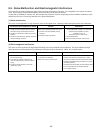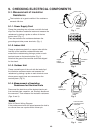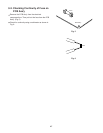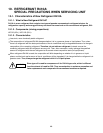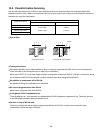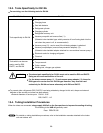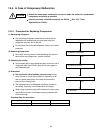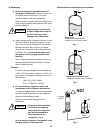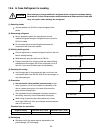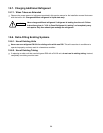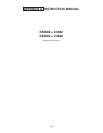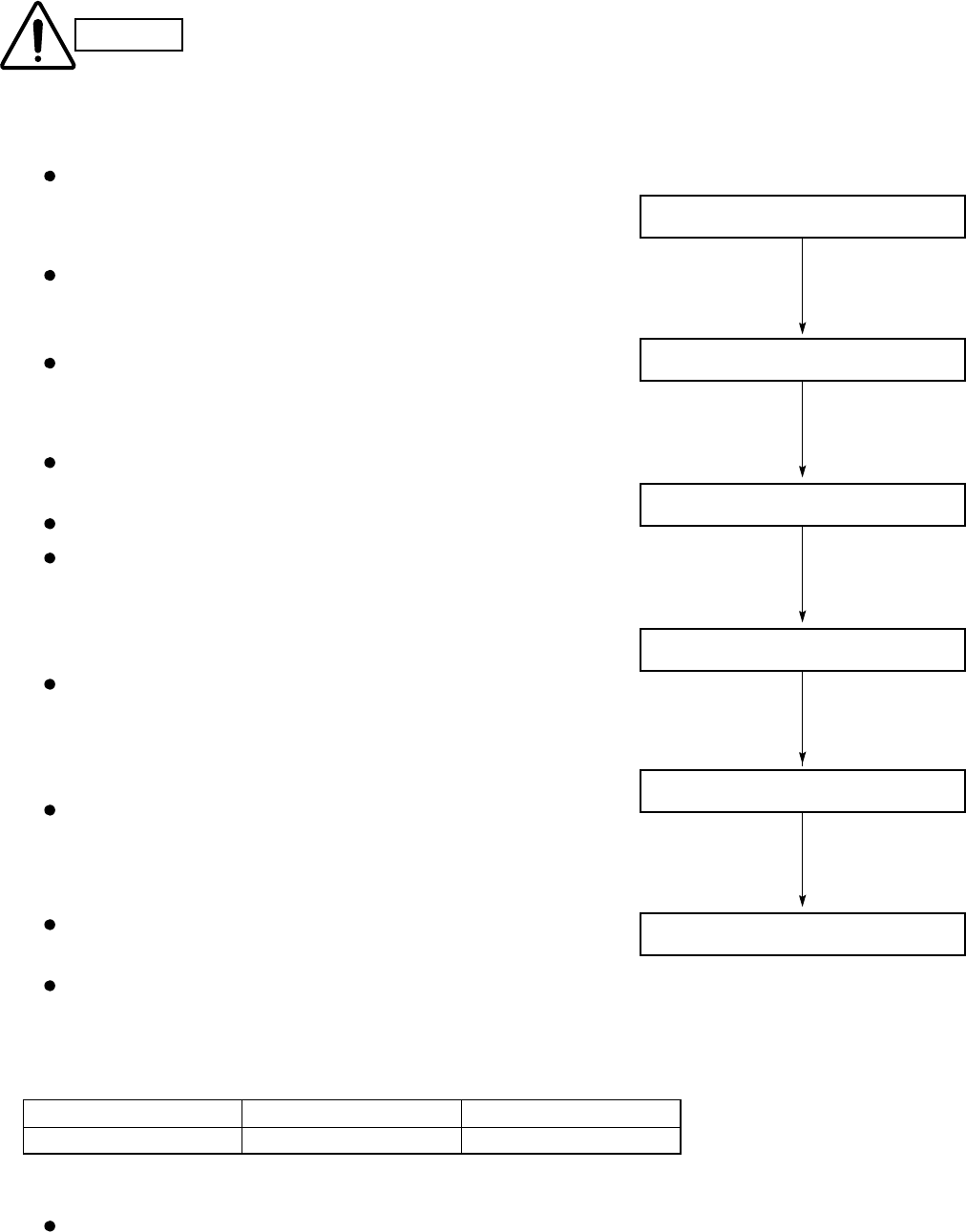
Length of tubing
Evacuation time
Less than 33 ft. (10 m)
More than 10 minutes
More than 33 ft. (10 m)
More than 15 minutes
10-6. In Case Refrigerant is Leaking
CAUTION
Never attempt to charge additional refrigerant when refrigerant has been leaking
from the unit. Follow the procedure described below to locate points of leaks and
carry out repairs, then recharge the refrigerant.
(1) Detecting Leaks
Use the detector for R410A to locate refrigerant leak
points.
(2) Recovering refrigerant
Never release the gas to the atmosphere; recover
residual refrigerant using the refrigerant recovery unit for
R410A, instead.
Do not reuse the recovered refrigerant because its
composition will have been altered.
(3) Welding leaking points
Confirm again that no residual refrigerant exists in the unit
before starting welding.
Weld securely using flux and wax for R410A.
Prevent oxide film from forming inside the tubes utilizing
substitution with nitrogen (N2) in the refrigerant circuit of
the unit. Leave ends of tubes open during welding.
(4) Checking for sealing
Use nitrogen gas for the pressurized gas, and never use
a refrigerant other than R410A. Also do not use oxygen or
any flammable gas.
(5) Evacuation
Use a solenoid valve-installed vacuum pump so that
even if power is cut off in the middle of evacuation of air
due to a power interruption, the valve will prevent the
pump oil from flowing back.
The equipment may be damaged if moisture remains in
the tubing, thus carry out the evacuation thoroughly.
When using a vacuum pump with exhaust air volume
more than 0.883 cu.ft./min. and ultimate vacuum pressure
rate of 50 micron Hg.
Standard time for evacuation
(6) Recharging
Recharge unit in the same manner explained on the
previous page "(5) Recharging."
(2) Recover refrigerant
OK
(3) Weld leaking points
OK
(4) Check for sealing
OK
(5) Evacuation
OK
(6) Recharge
(1) Detect leaks
OK
53



